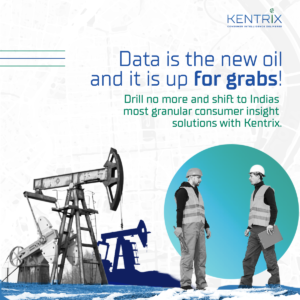In this article, we will explore the concept of big data and delve into the transformative power of big data analytics, uncovering the big insights it can offer.
In today’s digital age, we are generating vast amounts of data at an unprecedented rate. This enormous volume of information, commonly known as “big data,” holds immense potential for organizations across various industries. When properly analyzed and interpreted, big data can provide valuable insights and drive informed decision-making.
Big Data Big Insights: Understanding the Basics
Before we dive into the world of big data analytics, let’s first clarify what we mean by “big data.” In simple terms, big data refers to large and complex sets of data that cannot be effectively managed or processed using traditional data processing methods. It encompasses structured and unstructured data from diverse sources, including social media platforms, sensors, transactions, and more.
The term “big insights” refers to the valuable knowledge and actionable information that can be derived from analyzing big data. These insights can provide organizations with a competitive advantage, enable predictive modeling, enhance decision-making processes, and uncover hidden patterns and correlations.
How Does Big Data Analytics Work?
Big data analytics involves applying advanced techniques and algorithms to extract meaningful information from large datasets. Let’s explore some of the key steps involved in the big data analytics process:
1. Data Collection: Gathering and integrating data from multiple sources, such as customer databases, online platforms, and IoT devices, is the first step in the analytics journey. This data may include structured data (e.g., numbers, dates) and unstructured data (e.g., text, images).
2. Data Storage: Storing and organizing the collected data in a suitable infrastructure is essential for efficient analysis. Technologies like data lakes or distributed file systems are often used to accommodate the vast volume of big data.
3. Data Processing: Once the data is stored, it needs to be processed to extract meaningful insights. This stage involves tasks like data cleaning, transformation, and aggregation to ensure data quality and accuracy.
4. Data Analysis: Analyzing the processed data using various statistical and machine-learning techniques helps identify patterns, correlations, and trends. This step enables organizations to gain actionable insights and make data-driven decisions.
5. Data Visualization: Visualizing the analyzed data through charts, graphs, and dashboards helps present complex information in a more accessible and understandable manner. This aids in communicating insights to stakeholders effectively.

Get Consumer Insights Solutions : Switch to Kentrix
Benefits of Big Data Analytics
The utilization of big data analytics can bring numerous benefits to organizations across industries. Let’s explore some of the key advantages:
1. Enhanced Decision Making
Big data analytics provides organizations with the ability to make informed decisions based on real-time insights. By analyzing large volumes of data, organizations can gain a deeper understanding of their customers, market trends, and business operations. This knowledge enables them to identify new opportunities, optimize processes, and make strategic choices that align with their goals.
2. Improved Operational Efficiency
Analyzing big data can uncover inefficiencies and bottlenecks within business processes, allowing organizations to optimize operations. By identifying areas for improvement, businesses can streamline workflows, reduce costs, and enhance overall efficiency. For example, a logistics company can utilize big data analytics to optimize route planning, leading to reduced fuel consumption and improved delivery timelines.
3. Enhanced Customer Experience
Understanding customer behavior and preferences is crucial for providing personalized experiences and building strong relationships. Big data analytics helps organizations gain deep insights into customer preferences, purchase patterns, and sentiments. By leveraging this information, businesses can tailor their products, services, and marketing campaigns to meet the specific needs and desires of their target audience, thereby enhancing the overall customer experience.
4. Proactive Risk Management
Big data analytics empowers organizations to proactively identify and mitigate risks. By analyzing historical data and monitoring real-time information, businesses can detect potential issues or anomalies before they escalate. This proactive approach enables timely intervention, minimizing potential damages and optimizing risk management strategies.
5. Innovation and Competitive Advantage
In today’s competitive landscape, organizations that harness the power of big data analytics gain a significant edge over their competitors. By analyzing market trends, consumer insights, and emerging technologies, businesses can identify new opportunities for innovation and develop unique products and services. This helps them stay ahead of the curve and maintain a competitive advantage in the market.
6. Predictive Modeling
Big data analytics enables organizations to leverage predictive modeling techniques. By analyzing historical and real-time data, businesses can forecast future trends, anticipate customer behavior, and make data-driven predictions. These predictive insights provide organizations with a valuable tool for strategic planning, resource allocation, and risk assessment.

Click here to Know More About Kentrix
FAQs about Big Data and Big Insights
1. What industries can benefit from big data analytics?
Various industries can benefit from big data analytics, including retail, healthcare, finance, manufacturing, telecommunications, and marketing, to name a few.
The ability to extract valuable insights from large datasets is applicable across different sectors and can provide significant advantages to organizations in terms of operational efficiency, customer experience, and decision-making.
2. What technologies are commonly used for big data analytics?
Several technologies play a crucial role in big data analytics. These include Hadoop, Apache Spark, NoSQL databases, data lakes, and cloud computing platforms.
Each technology offers unique capabilities for storing, processing, and analyzing big data, empowering organizations to leverage the potential of their data assets effectively.
3. Is big data analytics only suitable for large enterprises?
No, big data analytics is not limited to large enterprises. Small and medium-sized businesses can also benefit from big data analytics. With the availability of cloud-based services and scalable analytics platforms, organizations of all sizes can leverage the power of big data to gain insights, optimize operations, and drive growth.
4. What are the ethical considerations surrounding big data analytics?
Big data analytics raises ethical concerns related to data privacy, security, and the potential for algorithmic bias. Organizations must handle data responsibly, ensuring compliance with relevant regulations and adopting ethical practices.
Data anonymization, encryption, and transparency in algorithmic decision-making are among the measures employed to address these concerns.
5. How can organizations get started with big data analytics?
To embark on the big data analytics journey, organizations should start by defining their goals and identifying the key business challenges they aim to address. Next, they need to assess their data infrastructure, ensuring it can handle large volumes of data.
Finally, organizations should invest in skilled data scientists and analysts who can extract valuable insights from the data and implement the necessary technologies and tools for analysis.
6. What does the future hold for big data analytics?
As technology advances and more data becomes available, the future of big data analytics looks promising. The integration of artificial intelligence and machine learning techniques with big data analytics will further enhance organizations’ ability to uncover valuable insights.
Additionally, the ethical and responsible use of data will continue to be a focus, ensuring that the benefits of big data analytics are harnessed while minimizing potential risks.
Conclusion
Big data analytics has the power to revolutionize the way organizations operate and make decisions. By harnessing the potential of big data, businesses can gain valuable insights, optimize processes, enhance customer experiences, and maintain a competitive advantage in the market.
As we continue to generate and collect vast amounts of data, the ability to extract big insights from big data will be a crucial skill for organizations seeking success in the digital era.
Read More,
Identifying Customer Profiles through new trends in Market Research


